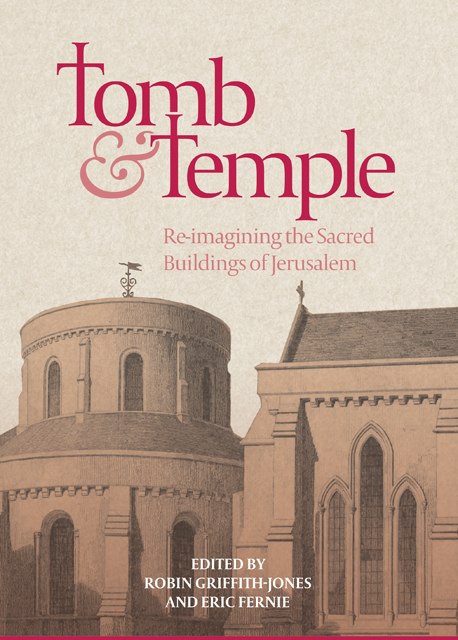Book contents
- Frontmatter
- Contents
- Illustrations
- Preface
- Contributors
- Abbreviations
- Editors’ Note
- Introduction
- Part I Re-presenting Jerusalem
- Part II The Church of the Holy Sepulchre
- Part III The Noble Sanctuary / The Temple Mount
- Part IV The Orthodox Churches
- Part V Round Churches in the West
- Appendix: The Knights’ Effigies: Newly Discovered Drawings by John Guillim, c. 1610
- Epilogue
- Index
- Already Published
Introduction
Published online by Cambridge University Press: 17 January 2023
- Frontmatter
- Contents
- Illustrations
- Preface
- Contributors
- Abbreviations
- Editors’ Note
- Introduction
- Part I Re-presenting Jerusalem
- Part II The Church of the Holy Sepulchre
- Part III The Noble Sanctuary / The Temple Mount
- Part IV The Orthodox Churches
- Part V Round Churches in the West
- Appendix: The Knights’ Effigies: Newly Discovered Drawings by John Guillim, c. 1610
- Epilogue
- Index
- Already Published
Summary
At that time a pilgrim from Jerusalem arrived, and offered to the man of God [Godric of Finchale] a portion of various relics from those most sacred places. The servant of God accepted the presents gratefully, and with a wonderful and emotional kissing he put them over and again to his mouth; and so, while we sat there, in a deep, projected voice and clear tone he sang a verse which he repeated over and again, six times, with an iteration of the same chant. This was the verse:
Jerusalem, which is built as a city that is compact together with itself:
For thither go up the tribes, the tribes of the Lord,
And the testimony of Israel, to confess the name of the Lord. [Ps. 122.3–4]
He sang this in the same order and chant in which it had up until then been customarily sung as the [post?] communion prayer in that church … And after it he added, ‘This city, about which I have just sung, is a type [typus] of heavenly blessedness, for which I have always been panting with a heaving chest. For although these words seem unknown to me, nonetheless I know – with Christ my teacher – what they sing of and what they figuratively [figurate] signify; and the Spirit which has unlocked such things to me will be able in his mercy to lead all of us whom he chooses to the joys of the heavens above which are figured [figurata] in these words!’
Reginald of Durham, Life and Miracles of St Godric of Finchale (1065–1170)
We turn in this section to round churches in northern Europe, and in particular to England. It is time to look afresh at the question with which this book began: to ask both what our predecessors saw and what they saw in what they saw. We will describe the buildings and their settings; and will then seek to do some justice to these churches’ place in the priorities of their patrons and in the devotion, thought and imagination of those who spent time in them. The hermit Godric of Finchale was not typical.
- Type
- Chapter
- Information
- Tomb and TempleRe-imagining the Sacred Buildings of Jerusalem, pp. 297 - 300Publisher: Boydell & BrewerPrint publication year: 2018



